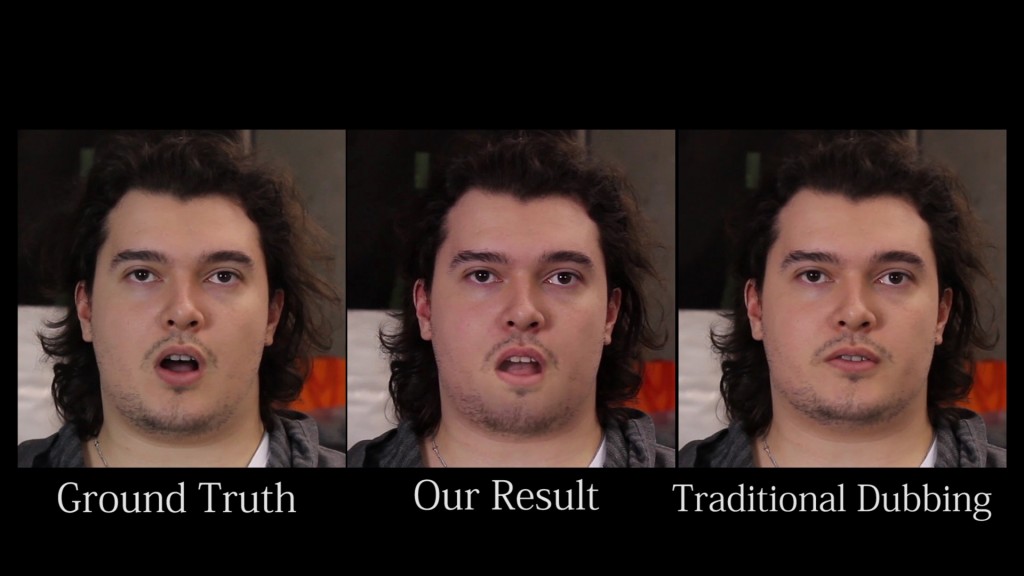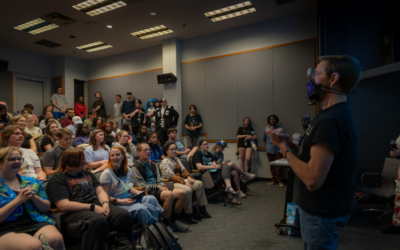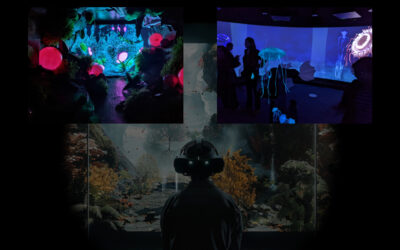In partnership with Microsoft, the ACM Student Research Competition — presented annually at the North American SIGGRAPH conference — is a unique forum for undergraduate and graduate students to present their original research before a panel of judges and attendees. Each year first, second, and thrid place winners are chosen in both undergraduate and graduate research categories. For a peak inside the program, we caught up with SIGGRAPH 2016’s first-place winners to learn about their experiences. Stay tuned to news from SIGGRAPH 2017 for more on this summer’s competition and related Posters program.
SIGGRAPH: Tell us a bit about the winning project you submitted.
Shaoichi Furukawa (SF): My research was done as part of my bachelor’s thesis and focuses on “dubbing videos,” largely thanks to the fact that I like foreign movies. One day, when I was watching a dubbed video, I realized that it had much more information than a subtitled one; however, there remains a disadvantage to dubbing in that it is difficult to achieve mouth-audio synchronization (i.e., to match an actor’s mouth motion to a voice-actor’s performance). Therefore, my research attempted to solve this problem through image processing. The title of my project is “Video Reshuffling: Automatic Video Dubbing without Prior Knowledge.”
MDH Yamen Saraiji (MYS): I am a big fan of science fiction novels, such as Ender’s Game and others. While reading Ender’s Game, I came across
SIGGRAPH: Share what has happened with your research since it was presented at SIGGRAPH.
SF: After the presentation at SIGGRAPH 2016, I felt strongly confident in my work. In addition, I learned that my subject could be applied in many ways. Therefore, I decided to continue work on the same subject and set a new goal to make my work accepted as a full paper, which I am now working toward as I experiment with new ideas.
MYS: During SIGGRAPH, I presented the preliminary results of “Layered Telepresence,” in which I describe the concept of being located at several locations simultaneously. I was very fortunate that my work was also accepted within SIGGRAPH’s Emerging Technologies program, so attendees were able to participate in a hands-on system and actually experience simulated multi-presence. Currently, I am exploring other factors necessary for multi-presence experiences, such as haptic feedback, remote body presentation, and mutual presence.
SIGGRAPH: How did you first hear about SIGGRAPH?
SF: When I entered Shigeo Morishima Lab at Waseda University, my professor told me about SIGGRAPH. At that time, my research subject had not been determined, but the trailers of SIGGRAPH were so attractive that I got strongly interested in the science behind computer graphics (CG).
SIGGRAPH: What made you decide to submit to the SIGGRAPH conference?
SF: I was so impressed when watching the SIGGRAPH trailers that I decided someday I would give a presentation about my work at that awesome conference. I also strongly believed that SIGGRAPH would be a good opportunity for me to communicate with front-running CG researchers. (In fact, I had a lot of chances to have discussions with famous researchers at the conference.)
MYS: After experiencing SIGGRAPH in 2013 as a volunteer, I gained a deeper understanding of the conference direction and focus areas, which match mine. SIGGRAPH is a multidisciplinary conference that connects academia with professional industry in computer graphics and interactive technologies. I knew that contributing to the conference would give me better exposure to a wider community of both researchers and entrepreneurs.
SIGGRAPH: What was your reaction when you found out you won the ACM Student Research Competition?
SF: Actually, when I found out I got the first place, I couldn’t believe it. It was not until I received the gold medal and felt the weight of it that I truly realized I won the award. Then, I thanked whoever had helped my work, including my professor, collaborators, professionals in dubbing, and others. That moment was the most valuable experience since I started academic research.
MYS: Knowing my poster got nominated for an award at SIGGRAPH was something I had hoped for since submissing, but being the gold, first-place prize winner was a totally different story. I knew then that I would have the chance to attend the ACM A.M. Turing Award ceremony in San Francisco if I got accepted for the SRC Grand Finalists.
SIGGRAPH: How do you think winning a SIGGRAPH award effected or will effect your career path post-graduation?
SF: I now belong to the Department of Pure and Applied Physics at Waseda University, studying image/video processing. Receiving first place in the ACM Student Research Competition gave me the confidence to continue to work in the field of computer science so that post-research I can work in a related field after graduation. I am really thankful for being able to take advantage of such a valuable opportunity.
MYS: Being awarded at SIGGRAPH does not only improve one’s resume, but also increases research confidence in pursuing bold ideas. As a graduate student, it is definitely important to gain visibility through my research results, and the competition provided me that exact opportunity after graduation.
SIGGRAPH: Where do you currently work and what do you do in your position?
SF: I am a master course student at Waseda University under Professor Shigeo Morishima and have kept to researching computer graphics. My major is image/video processing, and I am especially engaged in research on how to generate natural lip-sync animation focusing on both realistic videos and cartoon videos. I also work as an adviser to undergraduate students in the laboratory.
MYS: Currently, I am preparing for my last year of Ph.D. studies at Keio University Graduate School of Media Design in Yokohama, Japan. My laboratory, though, is located in The National Museum of Emerging Science and Innovation (Miraikan). It is there that I work as a research assistant (RA). Working as an RA not only involves me in my research as an academic personnel, but also allows me to get in touch with the industry to deploy our lab’s research outcomes to the community.
SIGGRAPH: Since SIGGRAPH, what has been your most exciting career accomplishment and why?
SF: I received funding from IPA:Exploratory IT Human Resources Project, which is known as one of the most prestigious Japanese national funds for young researchers and engineers, to make the system I have been researching more practical. The funded project focused on generating lip-sync animation of cartoon characters. Although It was very difficult to generate a product-level system, while making use of the research experience until SIGGRAPH, I generated elemental methods, and then refined my system step-by-step based on advice from professionals creating cartoon animation. As a result, I got a comment from a cartoon animation creator that he would use my system in his next work.
MYS: I presented my research in The Virtual Reality Society of Japan (VRSJ) and got the “Best Presentation” award. This step helped me to elevate my research topic within the research and science community of Japan and get in touch with more academics. Also, I joined Samsung Research America for an internship in which I worked in topics related to my research. This helped me to be involved with industry-oriented research, and to balance my professional skills.
SIGGRAPH: What is your best advice for someone pursuing a career in the science of computer graphics?
SF: My advice is “to keep running.” Right now, science/CG is one of the hottest academic fields and the latest methods can achieve things that were impossible a few years ago. As a result, people working in computer graphics science and related fields are required to keep up with the progress of technologies by gathering a variety of information from multiple directions.
MYS: New technologies are emerging from the convergence of diverse ideas from different fields. I believe in the importance of multidisciplinary research, and to try new and bold ideas: for example, multi-modal feedback interactions, haptics, and human-centric applications. New researchers in the areas of graphics and interactive technologies are encouraged to step out of their comfort zone and get in touch with people from other fields, such as cognitive science, psychology, physics, etc. It is really helpful to widen your horizons and gain new perspectives in order to discover new ideas.
SIGGRAPH: Share your favorite story from the research gathering process.
SF: During my research process, I visited a dubbing studio in order to gather some points of view from professionals in dubbing and to improve my method based on this. I discovered that they were really pleased that I was focusing my academic research on their field because they feel related technologies are progressing too slowly. When hearing these comments, I recognized that one of the most important things in research is to consider the users and try to reflect their opinions.
MYS: Probably my favorite story or context of research gathering that comes to mind is the ideation process I have with fellow students and lab members at school. Since my program is international, I always get the chance to engage in discussion with not only Japanese students but students from all over the world with many different backgrounds. I then use their feedback to develop my prototypes.
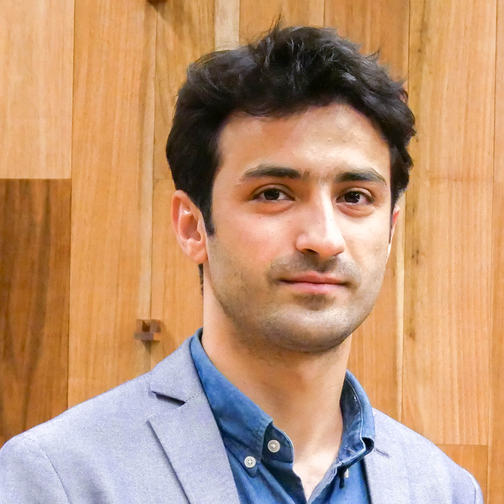
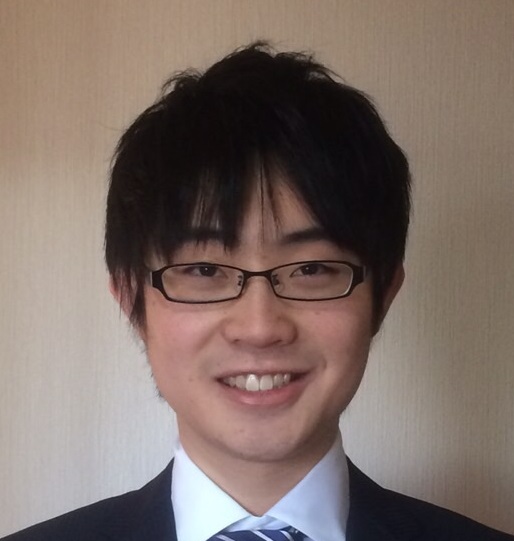 Shoichi Furukawa (left) is a faculty member in science and engineering with Waseda University’s Department of Pure and Applied Physics Shigeo Morishima Lab Master Course. He is also a member of the Waseda Applied Physics Annual Committee, and a student member of ACM and the Information Processing Society of Japan.
Shoichi Furukawa (left) is a faculty member in science and engineering with Waseda University’s Department of Pure and Applied Physics Shigeo Morishima Lab Master Course. He is also a member of the Waseda Applied Physics Annual Committee, and a student member of ACM and the Information Processing Society of Japan.
MHD Yamen Saraiji (right) was born and raised in Syria. After receiving a degree in computer science/artificial intelligence, he joined Keio University (Japan) in 2013 to pursue postgraduate studies. Upon finishing his master’s in media design, Saraiji joined the Ph.D program and is now focusing on embodied media, with research interests in the areas of telexistence, perception augmentation, and mutual communication and representation for telepresence applications.

